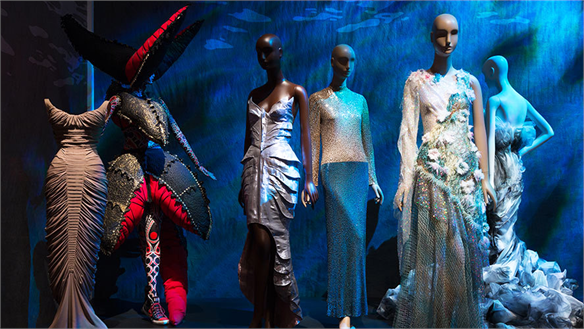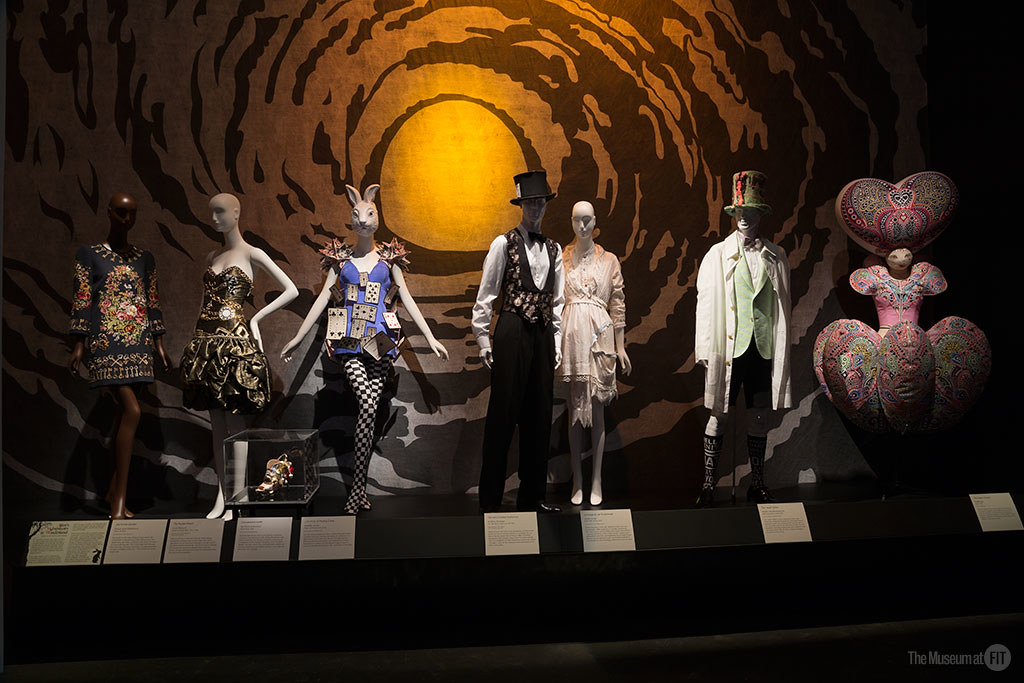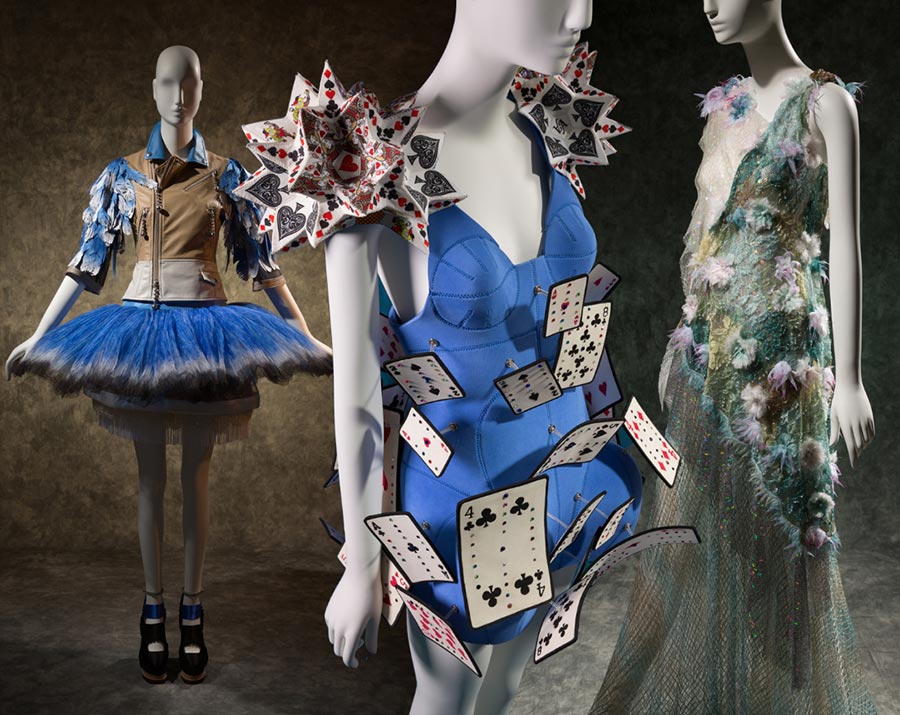The Fashion Institute of Technology takes us once upon a time to an enchanted, whimsical world in their new exhibition, Fairy Tale Fashion.
Fairy Tale Fashion is a unique and imaginative exhibition that examines fairy tales through the lens of high fashion. In versions of numerous fairy tales by authors such as Charles Perrault, the Brothers Grimm, and Hans Christian Andersen, it is evident that dress is often used to symbolize a character’s transformation, vanity, power, or privilege. For example, the importance of Cinderella’s glass slippers is widely known, yet these shoes represent only a fraction of the many references to clothing in fairy tales.
Organized by associate curator Colleen Hill, Fairy Tale Fashion features more than 80 objects placed within dramatic, fantasy-like settings designed by architect Kim Ackert. Since fairy tales are not often set in a specific time period, Fairy Tale Fashion includes garments and accessories dating from the 18th century to the present. There is a particular emphasis on extraordinary 21st-century fashions by designers such as Thom Browne, Dolce and Gabbana, Tom Ford, Giles, Mary Katrantzou, Marchesa, Alexander McQueen, Rick Owens, Prada, Rodarte, and Walter Van Beirendonck, among others.
The main gallery space uses fashion to illustrate 15 classic fairy tales, arranged within four archetypal settings. Visitors first walk into the Forest, which includes the tales Little Red Riding Hood, Snow White, The Fairies, Rapunzel, Snow White, and Rose Red. Several variations of Little Red Riding Hood’s red cloak are shown, beginning with a fashionable woolen cloak from the late 18th centurythe style that is used to illustrate innumerable versions of the story and concluding with a fall 2014 Comme des Garçons ensemble with an enormous, peaked hood in scarlet patent leather.
Inspired by the fairytale-themed fall 2014 presentation by Alice + Olivia designer, Stacey Bendet, Snow White is portrayed wearing a black organza gown encrusted with rhinestones while lying in her glass coffin. The subsection on Rapunzel includes a stunning dress from Alexander McQueens fall 2007 collection, made from deep emerald velvet embellished with copper-colored beads that create a motif of cascading hair.
The center of the gallery is dominated by a large Castle, in and around which the tales Cinderella, Furrypelts, The Snow Queen, Beauty and the Beast, and Sleeping Beauty are displayed. Cinderella is first shown in her rags, exemplified by a Giorgio di SantAngelo ensemble with a skirt made from shredded chiffon, and dating from his 1971 The Summer of Jane and Cinderella collection. Cinderellas spectacular glass slippers are exemplified by a pair of 2014 heel-less shoes by Noritaka Tatehana, 3D-printed in clear acrylic and faceted to reflect light.
Clothing is central to a lesser-known Brothers Grimm tale titled Furrypelts, which calls for a cloak of many furs, in addition to magnificent dresses that look like the sun, the moon, and the stars. The latter is represented by a dazzling, early 1930s evening gown by Mary Liotta, covered in silver stars crafted from beads and sequins. In The Snow Queen, the beautiful villainess wears a coat and cap of pristine white fur, exemplified in Fairy Tale Fashion by an opulent hooded fur cape by J. Mendel from 2011.

The Little Mermaid and The Swan Maidens are explored in the Sea section of the exhibition. Charles Jamess Swan dress, from the mid-1950s, has a full skirt made from alternating layers of black, beige, and brown net that form an exceptionally graceful silhouette. Undercovers spring 2015 collection featured numerous swan-inspired designs, one of which is now in the collection of The Museum at FITan especially detailed ensemble comprised of a feather-printed miniskirt worn beneath a tutu hand-painted with a plumage motif. It is paired with a motorcycle-style jacket with sleeves made from laser-cut silk feathers.
The Little Mermaid is represented by a variety of beautiful, mermaid-inspired gowns, including Thierry Muglers 1987 bustier and fishtail skirt in metallic lilac fabric, and an elaborately crafted dress embellished with pearls, sequins, feathers, and Swarovski crystals from the spring 2015 Rodarte collection.

The exhibition also highlights two fairy tales that take place in Parallel Worlds, Alice in Wonderland and The Wizard of Oz. Although Alice makes little reference to clothing, there is a distinct Wonderland aesthetic that has influenced fashion. This subsection will feature a playful, bright blue mini-dress by Manish Arora, adorned with fabric playing cards that reference the tales Queen of Hearts and her playing card army.
By contrast, The Wizard of Oz makes numerous references to fashion, including Dorothy Gale’s blue-and-white gingham frock, represented by a checked cotton dress from the early 1940s by Adrian, who also designed many of the costumes for the famous 1939 film version of the tale. Although Dorothy’s magical shoes are silver in the story, they are better remembered as the sparkling ruby slippers from the movie. A pair of bright red, crystal-encrusted stilettos by Christian Louboutin is unmistakably evocative of Dorothy’s iconic footwear.


Fairy Tale Fashion is on view at The Fashion Institute of Technology Museum until April 16, 2016. For more information visit www.fitnyc.edu/museum

